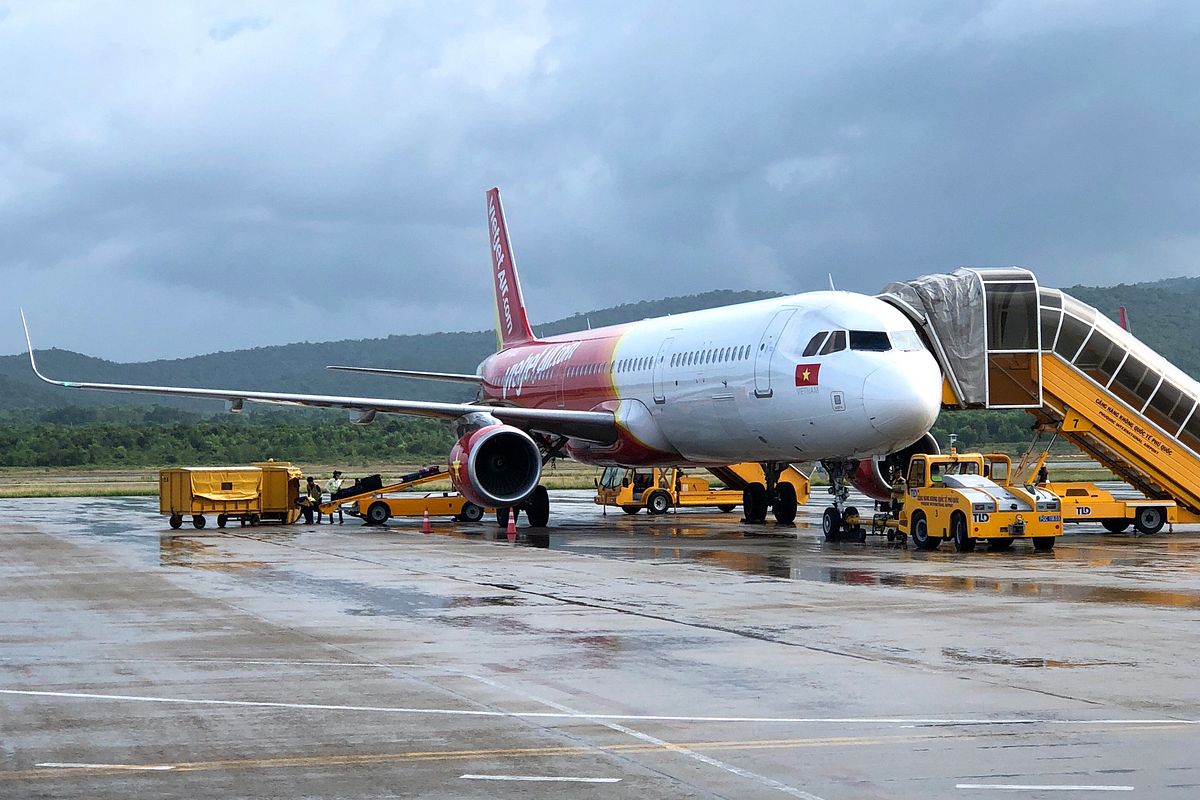It all started with a sparkle on the horizon, a beam of solar brilliance bouncing off a garish metallic surface.
Scanning the skyline from my Bien Hoa home, I notice a golden spire glimmering in the midday sun. Could my vision be deceiving me, I wonder, forcing my eyes to focus on the distant object, or am I, in fact, looking at something completely ordinary — perhaps a feature of the industrial landscape which surrounds the city?
It can only be one thing, I conclude, after brief deliberation: a stupa, and one of ambitious proportions. The enormous bell shaped tower dominates the vista. But you don't get these in Vietnam, I recall. Thailand, Cambodia, or Myanmar, yes, but surely not here. It turns out there is one here, and I had just found it, a mere 40-minute drive from downtown Saigon.
Buu Long Pagoda is an idiosyncratic hodgepodge of pan-Southeast Asian architecture, and the bold vision of one man — Le Van Gian — a doctor, civil servant and first abbot of the sanctuary. Established in 1942, the temple complex incorporates sacral forms seldom found in Vietnam.
It is most likely Giang's extended stay in Phnom Penh that inspired the structure's unique design. The Cambodian doctor, as he is known by the monks, is also widely believed to be responsible for the most recent reintroduction into Vietnam of Theravada Buddhism — the most ancient doctrine of the philosophy, also referred to as Southern Buddhism due to its popularity in Sri Lanka, Thailand, Laos, Burma and Myanmar.
Located in District 9 on the banks of the Dong Nai River, the temple complex offers a tranquil getaway from the hustle and bustle of the big city. Surrounded by a thick, shady grove, the site is a perfect place to escape the chaos of Saigon, unwind, meditate, and explore the many meandering paths and contained temples.

A monastery found on the site houses ten monks and 30 nuns. They spend their days meditating, chanting and maintaining the ten-hectare property. Typically, those involved in the Buddhist monastic order will renounce meat, intoxicants and earthly possessions, in addition to vowing to remain chaste for the duration of their service.

Devotees come to the pagoda to participate in meditation sessions and chanting led by the monks. These visits are particularly important, as those living in the monastery rely on the daily food donations made by the congregation.

Tue Quang, a senior monk at the temple, said the pagoda is open to anyone, regardless of their background or spiritual beliefs. ''Pagodas are made to be visited," he said. "Le Van Gian would not have it any other way.''

Planted in 1959, the enormous tree found behind the main temple was brought to the complex as a sapling by a Sri Lankan monk named Nanda. The tree is thought to be a direct descendant of the Bodhi Tree that once grew at the Mahabodhi Temple in India, believed to be the site of Guatama Buddha's spiritual enlightenment.

Chameleon-shaped dragon heads are among the many foreign elements incorporated into the temple's design. Others include intricately patterned metal features, ubiquitous dharma wheels and, of course, the characteristic gilded towers.

I was told the peaceful atmosphere found at Buu Long Pagoda is the result of two main factors: the temple's cool, shaded location, and the energy produced by its resident monks during chanting and meditation.

The lush greenery which surrounds the temple complex is particularly striking during the wet season, when daily precipitation fuels plant growth and floral blooms, attracting a multitude of colorful butterflies to the area.

A visit to the area would not be complete without taking a short ferry trip to the nearby Phuoc Long Temple, located on an island on the Dong Nai River.

The short ferry ride provides spectacular views of the stupa, framed by the rapidly industrializing banks of the Dong Nai River.

The gaudy, traditionally Vietnamese Phuoc Long temple complex, filled with Chinese influences and various deities derived from local folklore, offers a stark contrast to the relatively austere interiors of the buildings found at Buu Long, where only the Buddha is venerated.

Packed with stalls selling a multitude of offerings, the island is a popular pilgrimage destination for the region's devotees.

The island's vendors sell souvenirs, jewelry and talismans, which can be injected with additional powers through a monk's blessing.

A fortuneteller offers her powers of foresight. Unfortunately, even genuine clairvoyance isn't able to bypass the language barrier, and my fate remains a mystery.

Before leaving the island I'm talked into buying a cage filled with house sparrows – the act of expressing mercy by releasing captive animals is a common practice throughout Asia. Mere minutes later, walking back to the ferry, I slip in a puddle of primordial slime, bruising my tailbone and scraping my ankle – blood and parasitic sludge mixing before my eyes. I'm not sure I buy the whole karma thing.















